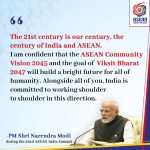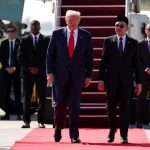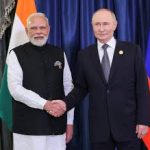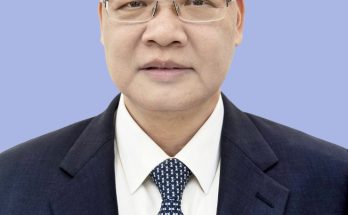 “The defining partnership of the 21st century,” as US President Barack Obama has evocatively described the India-US relations, will be in for a fresh appraisal and possible rejuvenation when the world’s two largest democracies hold a wide-ranging strategic dialogue in the Indian capital next week.
“The defining partnership of the 21st century,” as US President Barack Obama has evocatively described the India-US relations, will be in for a fresh appraisal and possible rejuvenation when the world’s two largest democracies hold a wide-ranging strategic dialogue in the Indian capital next week.
Secretary Kerry’s first visit to India
For US Secretary of State John Kerry, India is a familiar diplomatic territory, but his June 23-25 visit is special as this is the first time he is coming to New Delhi as the US’ top diplomat and will also be holding his first full-spectrum talks with India’s External Affairs Minister Salman Khurshid.
Passion waning?
Kerry’s trip comes amid a widespread perception of stasis in the India-US relationship, which was transformed by a path-breaking nuclear deal during the Bush presidency, but is now seen by many analysts to have lost some of its sheen.
The landmark nuclear deal is languishing due to jitters among American companies about India’s civil nuclear liability law. Being the prime mover behind New Delhi’s global nuclear rapprochement, Washington is not happy with the way how other countries like France and Russia are walking away with a piece of India’s nuclear cake. On the trade front, a host of irritants has cropped up and both sides feel they have “issues to discuss.”
On the geopolitical and regional issues, Afghanistan has emerged as a theatre of conflicting perceptions, with India voicing its concern in strong words about the US’ initiation of dialogue with a section of the Taliban leadership. In the sphere of defence, there are also some heartburn in Washington, with the US companies losing out on some prized Indian multi-billion dollar contracts.
There is, therefore, a fairly substantive list of gripes on both sides that needs to be addressed upfront; sweet-talking clichés will only clog the natural flow of sentiments between the two kindred democracies.
Looking Ahead
But the picture is not all that bleak; true, those looking for big banner headlines will be perhaps disappointed, but in an enduring relationship one can’t expect an unremitting succession of passionate highs. In a live-in relationship, there are going to be quibbles, but, mercifully, both partners are managing their differences well while enlarging areas of convergence. There is plenty happening in the Asian geopolitical scene that will perhaps draw the two countries in a closer embrace, rather than drifting apart. It is this sobering recognition of manifold advantages of hanging together and the imperative to cement a largely fecund partnership that frame the fourth round of strategic dialogue in New Delhi June 24.
The fact that this is the first round of strategic dialogue in the second innings of the Obama administration imparts the talks an added value and traction. The effort on both sides will be to iron out differences, address each other’s concerns, and agree to differ on some issues while building a substantive agenda for the trajectory of the India-US relations over the next few years. Ashley Tellis, a known South-Asia expert in Washington, says the centerpiece of the talks will be the conversations Kerry has with Khurshid and Indian Prime Minister Manmohan Singh on the direction of the US-Indian relationship and ways to deepen and reinvigorate it.
Setting the tone
Ahead of his visit, Kerry has set an unmistakably positive tone in a pithy video message in which he termed the dialogue “a critical ongoing conversation” between the two countries. He reinforced the original US promise of aiding India’s rise as a power, saying the US backs New Delhi’s inclusion as a permanent member of a reformed and expanded UN Security Council.
India, on its part, also underlined the sheer breath and range of the India-US relations and a multi-layered dialogue architecture that allows each side to constantly exchange notes and explore new avenues of cooperation. “It is part of the process of taking forward the India-US relationship which currently is one of our more intense and more in-depth partnerships as it covers interaction across most of the spheres of government work,” says Vikram Doraiswamy, joint secretary in charge of Americas in India’s external affairs ministry.
From India’s point of view, issues related to the US immigration reforms that adversely impact Indian IT firms, the export of shale gas, a potential game-changer in the global energy calculus, and rejuvenating the trade and innovation relationship will be top of the agenda.
Trade Diplomacy
The US side will be looking to push India to step up economic reforms, improve the investment and regulatory environment in the country and seek a proactive role for India in stimulating the global economic recovery.
Ahead of Kerry’s visit, a senior US official said there is a lot of unhappiness in Washington over India’s “casual attitude” towards patent regime and intellectual property rights that threaten the knowledge and creative industry workers in the US. A group of U.S. senators has also written to Kerry urging him to push New Delhi to protect US business interests, including recent court decisions on life-saving drugs.
Trade diplomacy will be, therefore, at the heart of the reinvigorated India-US relations. Recently, a consortium of 16 US business organisations had asked President Obama to “use all available trade tools and diplomatic engagement” to pressure India to open its markets to US exports. In times of the slowdown, the potential of the 300-million plus Indian middle class market has hardly been leveraged by American companies. With the US economy recovering, there are now more opportunities for win-win deals.
“On the bilateral side, the focus will be on the expansion of cooperation in the areas of defence and security, trade and investment, science and technology, clean energy and environment. Several new initiatives to strengthen bilateral cooperation in these areas in particular will be identified,” said Syed Akbaruddin, spokesperson of India’s external affairs ministry.
India-US Nuclear Deal
Kerry, who played an important role in getting the Democratic Party’s backing for the nuclear deal in the summer of 2008, is also expected to seek greater clarity on India’s civil nuclear liability legislation that is perceived by American nuclear companies as a major deterrent in resuming nuclear trade with India. India has made it clear that it is ready to address the US concerns within four corners of the national law, but there are indications that some mid-way formula in the form of an early works agreement can be worked out to clarify the implementation procedures of the civil liability law that could enable the US to restart supplying nuclear technology to India.
Asian architecture, Afghanistan, China
Besides bilateral issues, what the two democracies discuss about cross-cutting global issues and the evolving Asian architecture against the backdrop of the rise of China will be of wider interest. In this context, conflicting perceptions on the Taliban reconciliation process could emerge as a source of dissonance. In a pointed message, India has made it clear that “the reconciliation process should not seek to create equivalence between an internationally recognised government and insurgent groups.” India supports an “Afghan-led, Afghan-owned and Afghan-controlled reconciliation process, within the framework of the Afghan Constitution and internationally accepted norms,” Syed Akbaruddin said in New Delhi June 21.
But this differing perception on Afghanistan will be balanced by a larger congruence of interests in shaping a balanced, inclusive Asian architecture. Yes, China will be on table, but the discussions on China are expected to be more nuanced given the high-stakes trade relationship both the US and India has with China. There is no stopping some analysts who obsess about the China-containment as a major driver of the India-US strategic relationship, but they will do well to scrutinise closely the outcomes of the recent visits of Chinese Premier Li Keqiang to India and President Xi Jinping’s summit talks with President Obama in a California retreat.
It’s economy, stupid!
Strategic issues apart, one can expect wide-ranging discussions on the play of the global economy, says Sanjaya Baru, a close US-watcher and a former aide to Prime Minister Manmohan Singh. If the defining relationship of the 21st century is to have more traction, it’s important for both countries, which have some much in common, to raise the bar for bilateral trade and investment, and proactively cooperate in rejuvenating the world economy. In fact, setting a more ambitious target of doubling bilateral trade by 2015-2016 could well be the next big idea to power the India-US relationship.
Author Profile

- Manish Chand is Founder and Editor-in-Chief of India Writes Network (www.indiawrites.org) and India and World, a pioneering magazine focused on international affairs. He is CEO, Centre for Global India Insights, an India-based think tank focused on global affairs.
Latest entries
 India and the WorldOctober 27, 2025Modi hails the century of India and ASEAN, backs ASEAN centrality
India and the WorldOctober 27, 2025Modi hails the century of India and ASEAN, backs ASEAN centrality India and the WorldOctober 26, 2025Act East: Five reasons why ASEAN summit in Malaysia matters
India and the WorldOctober 26, 2025Act East: Five reasons why ASEAN summit in Malaysia matters India and the WorldOctober 25, 2025Malaysia Summit: India can play a bigger role in ASEAN: Anil Wadhwa
India and the WorldOctober 25, 2025Malaysia Summit: India can play a bigger role in ASEAN: Anil Wadhwa India and the WorldOctober 2, 2025With US frowning, India to host Putin in December
India and the WorldOctober 2, 2025With US frowning, India to host Putin in December







